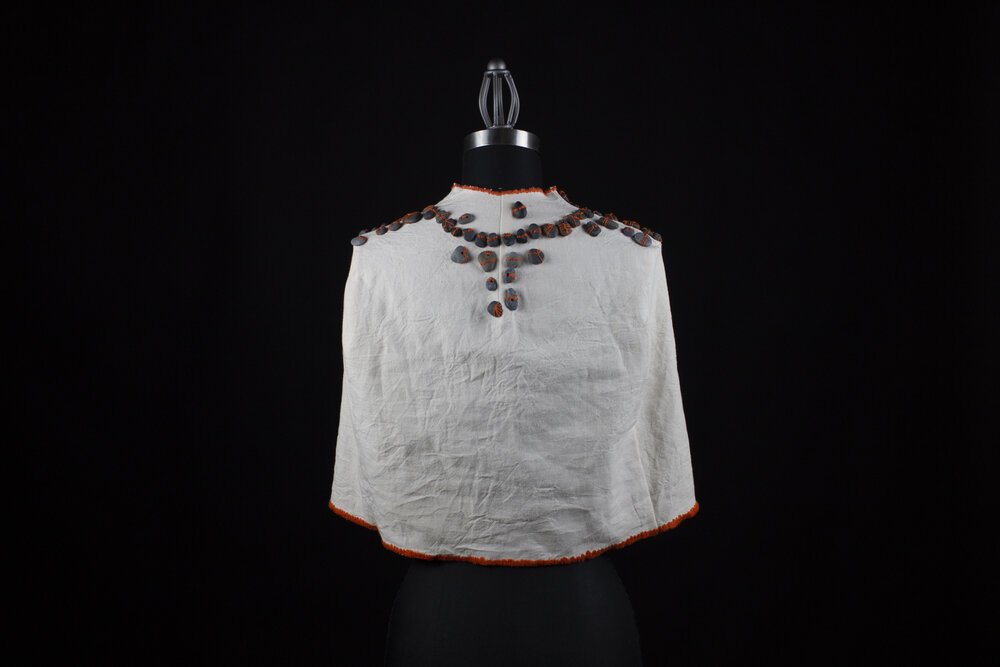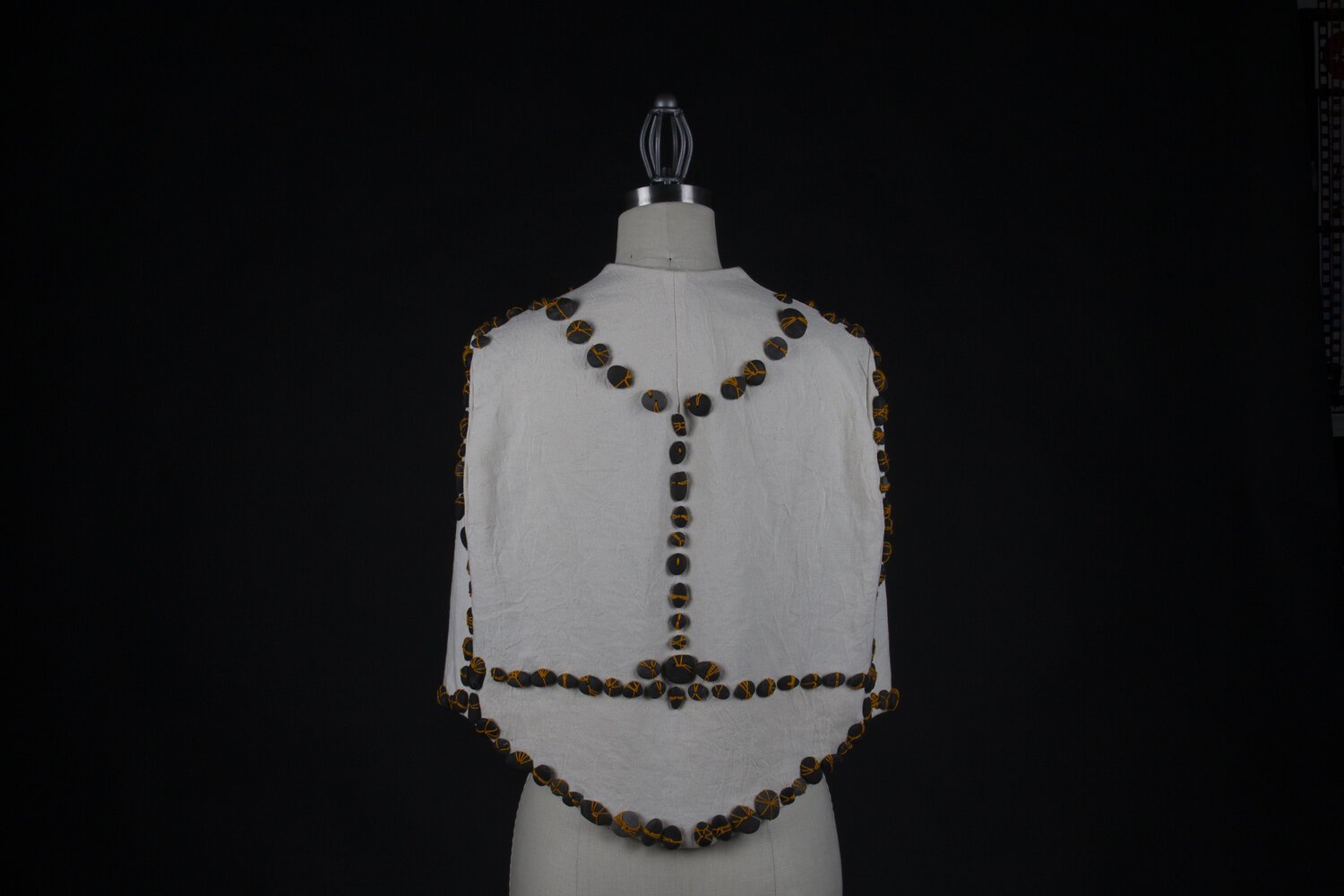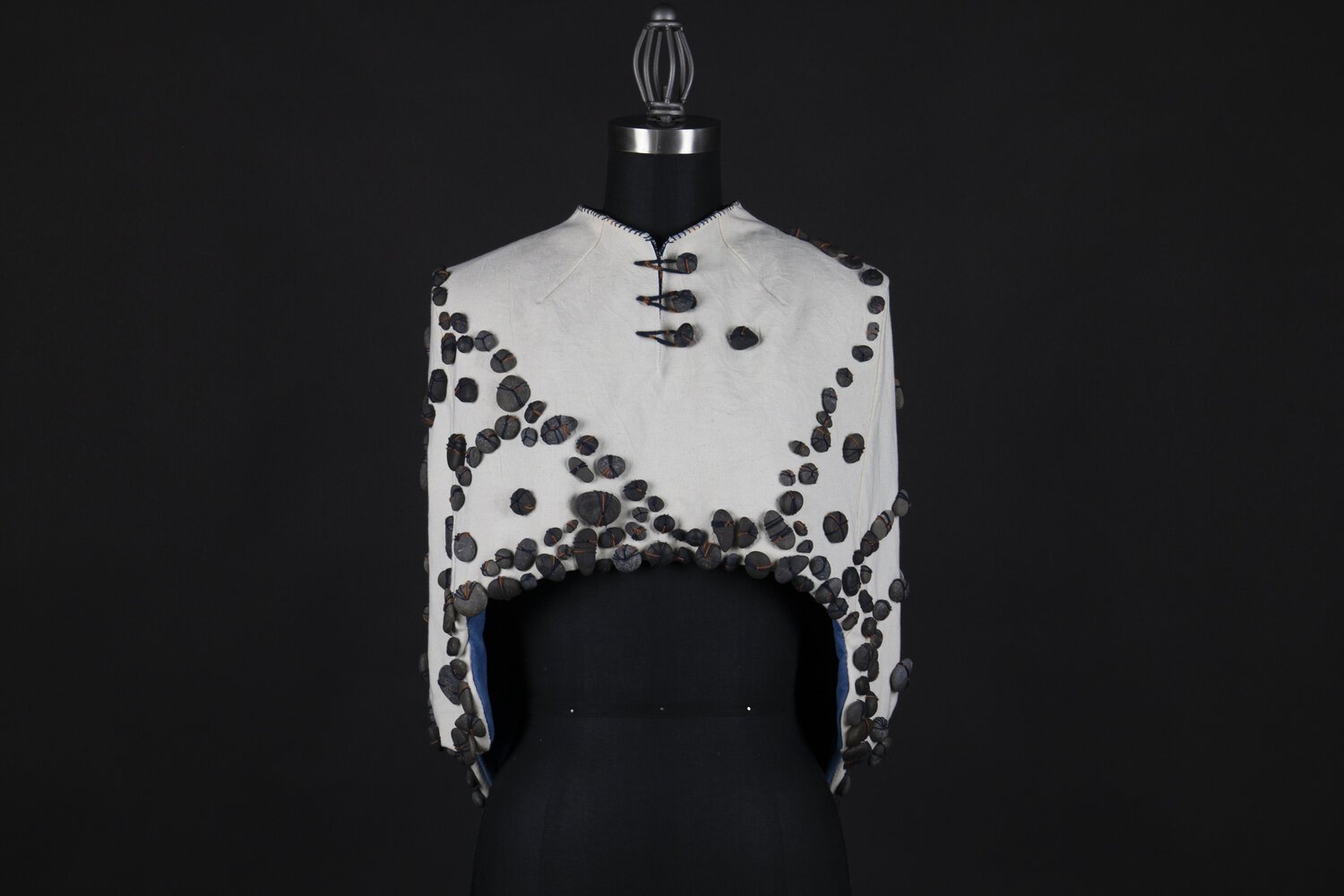Sophia Lengle / The Burden
of Adornment
9/23/2020
My Arts’ practice is rooted in studio Craft. I work mainly with fibre and textiles, but also incorporate wood, drawing and found object into my works.
This past year, I focused on creating a body of work called The Burden of Adornment. This work is the culmination of my interests in the areas of value and excess, repetitive labour, and how those things can be investigated on the body and in-turn affect the body.
My Arts’ practice is rooted in studio Craft. I work mainly with fibre and textiles, but also incorporate wood, drawing and found object into my works.
This past year, I focused on creating a body of work called The Burden of Adornment. This work is the culmination of my interests in the areas of value and excess, repetitive labour, and how those things can be investigated on the body and in-turn affect the body.
Like others who appreciate the meditative quality of nature, I am a collector of rocks and pebbles. They seem to call out to me and I often come home from walks and errands with rocks in my pockets. I did not consciously consider the act of collecting rocks until a little over a year ago, even though I’ve been a collector since childhood. The awareness of my habit and why I might be collecting occurred to me when I began to consider rocks as a material to work with. I began incorporating rocks into my practice by stitching them to cloth and found the following description of “adornment” in the Oxford dictionary: “precious stones have been used for the purposes of adornment for over 7,000 years” (“Adornment: Definition”). I realized that by using rocks (also known as stones) to adorn, I could follow the same 7,000 year-old process of creating a valuable or beautiful personal item, but with a twist.
By using “valueless” objects to adorn a garment, I am playing with ideas of value and beautification. Though another aspect of the work is where beauty and excess intersect.
For the work The Burden of Adornment, I drafted the form of the garments (capelets) with a built-in collar and restrictive form to echo regal and or militaristic attire, like a uniform.
I used 7oz canvas for its strength and stability; this material does not compete for attention with what is added to it.
All of the material decisions were informed by my wish to support and elevate the stones from common to unusual and attractive.
Alongside my desire to elevate the common rock (and examining the ideas of value), I also have an interest in “material excess”. Adornment seems a topic to explore in this context because while adornment itself isn’t inherently excessive, there often exists a fine line between beauty and excess. Within the work these ideas are most obvious in the increasing number of rocks used to adorn each garment with each iteration.
The first item is adorned with 100 rocks, the second with 200 and so on. And with each iteration, the pattern of the capelet itself evolves to become more dramatic and hopefully attractive, growing longer in the back and shorter in the front. The intention behind these decisions was to make the final capelet the most “beautiful” but also the heaviest burden to bear. And while the capelet weighs only a few kilos, those kilos are gratuitous.
For example, carrying a full backpack is much more weight than even the heaviest of the capelets, but the reason we carry the backpack is presumably to transport tools and other items we need/use to sustain us. In contrast, the weight of the rocks becomes a cumbersome by-product of adornment. Though, perhaps the weight could add to the wearing experience because a garment encompasses and clings to a wearer. The Burden of Adornment has brought up questions I still do not have answers to.
What I do know is The Burden of Adornment is not meant to condemn the adorning of oneself, but poses the question, how much is too much?How much am I willing to bear?
This was a question I also considered in relation to the labour required in these capelets. In the process of making I collected, drilled and stitched a total of 600 rocks. The work is repetitive, laborious and at times felt excessive. The burden of labour (adornment) is multi-layered in the process, weighting these garments proportionally to their embedded value. As the maker I found the labour in itself valuable. As the nondescript rocks began to embody worth, and with each repetitive stitch, I became aware of my own presence.
I was willing to bear the weight of ones own work.
01 - About the Work






